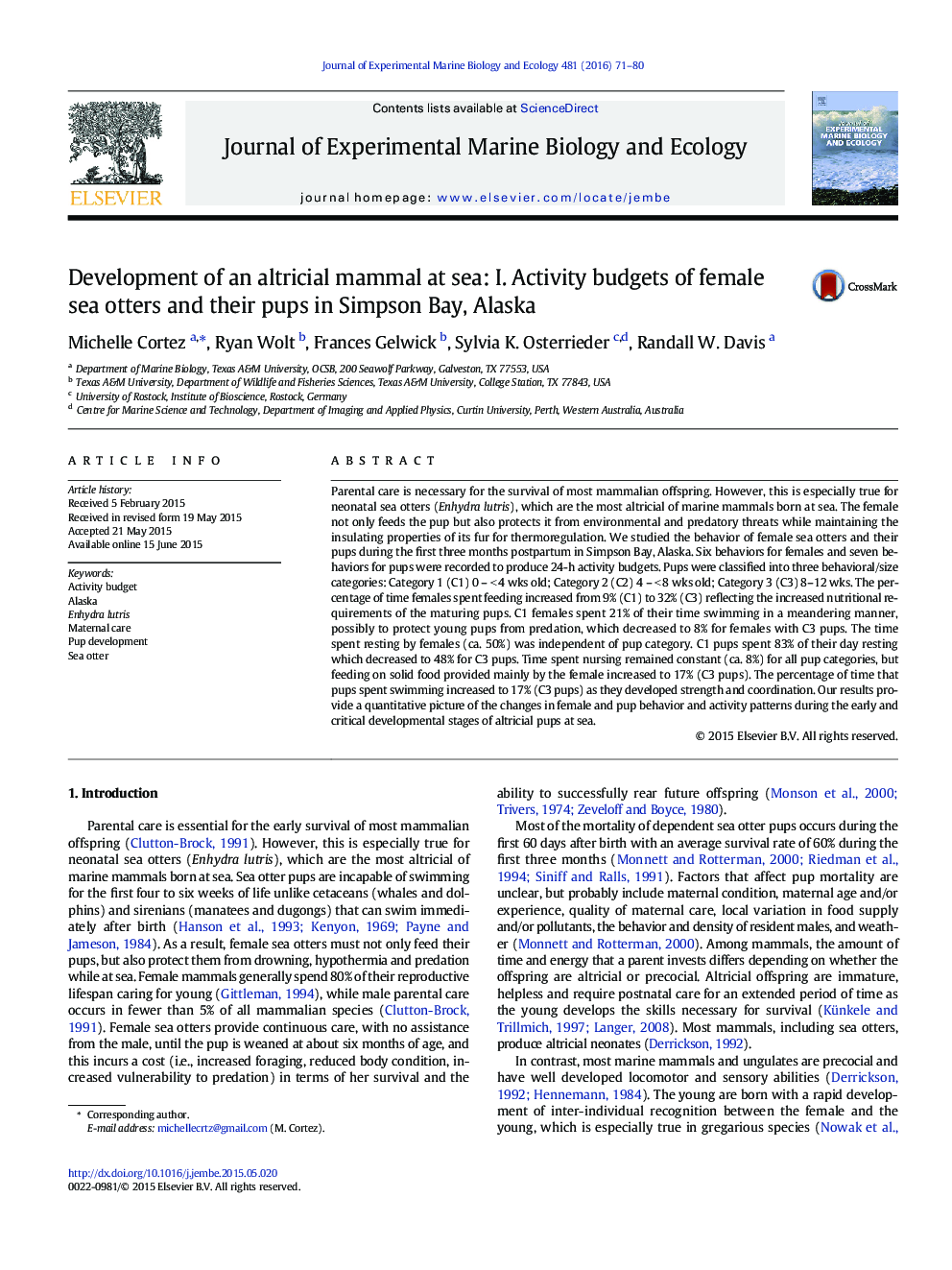| Article ID | Journal | Published Year | Pages | File Type |
|---|---|---|---|---|
| 6303739 | Journal of Experimental Marine Biology and Ecology | 2016 | 10 Pages |
â¢Females with young pups feed less even with a very high resting metabolic rate.â¢Females with newborn pups spent large amounts of the day in meandering swimming.â¢Females with older pups increase feeding to compensate for former lack of feeding.â¢Females adjust activity to uphold her body maintenance behaviors as pups mature.
Parental care is necessary for the survival of most mammalian offspring. However, this is especially true for neonatal sea otters (Enhydra lutris), which are the most altricial of marine mammals born at sea. The female not only feeds the pup but also protects it from environmental and predatory threats while maintaining the insulating properties of its fur for thermoregulation. We studied the behavior of female sea otters and their pups during the first three months postpartum in Simpson Bay, Alaska. Six behaviors for females and seven behaviors for pups were recorded to produce 24-h activity budgets. Pups were classified into three behavioral/size categories: Category 1 (C1) 0 - <Â 4 wks old; Category 2 (C2) 4 - <Â 8 wks old; Category 3 (C3) 8-12 wks. The percentage of time females spent feeding increased from 9% (C1) to 32% (C3) reflecting the increased nutritional requirements of the maturing pups. C1 females spent 21% of their time swimming in a meandering manner, possibly to protect young pups from predation, which decreased to 8% for females with C3 pups. The time spent resting by females (ca. 50%) was independent of pup category. C1 pups spent 83% of their day resting which decreased to 48% for C3 pups. Time spent nursing remained constant (ca. 8%) for all pup categories, but feeding on solid food provided mainly by the female increased to 17% (C3 pups). The percentage of time that pups spent swimming increased to 17% (C3 pups) as they developed strength and coordination. Our results provide a quantitative picture of the changes in female and pup behavior and activity patterns during the early and critical developmental stages of altricial pups at sea.
